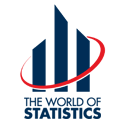October 2007
Contents:
- 17th Annual Morris Hansen Lecture
- Seminars, Symposia & Call For Papers:
- Education Announcements:
- Students' Corner
- Short Courses (includes JPSM courses)
- WSS Short Course: The Analysis of Cross-Classified Categorical Data (pdf)
September 27-28, 2007
Registration due by September 17, 2007 - SIGSTAT Topics for Fall 2007
- Employment Opportunities
- Note From The WSS NEWS Editor
- WSS People
- PDF Versions:
(Requires Adobe Acrobat Reader)
Newsletter
Area Meetings and Courses
17th Annual Morris Hansen Lecture
October 30, 2007
Joe Sedransk, Professor of Statistics (Case Western Reserve University), will give the 17th Annual Morris Hansen Lecture on Tuesday, October 30, at 3:30 p.m. in the Jefferson Auditorium of the Department of Agriculture's South Building (Independence Avenue SW, between 12th and 14th Street).
Dr. Sedransk will speak on "Assessing the Value of Bayesian Methods for Inference about Finite Population Quantities." Donald Malec (Bureau of Census) will be the chair while Nathaniel Schenker (National Center for Health Statistics) and David Binder (Statistics Canada) will be the discussants. A reception will follow the lecture. The Hansen Lecture Series is sponsored by the Washington Statistical Society, Westat, and the National Agricultural Statistics Service.
The USDA's South Building is between 12th and 14th Streets at the Smithsonian Metro Stop (Blue Line). Enter through Wing 5 or Wing 7 from Independence Ave. (The handicapped entrance is at 12th & Independence). A photo ID is required.
Please pre-register for this event to help facilitate access to the building. Pre-register on line at http://www.nass.usda.gov/morrishansen/.
Return to top
104th Meeting of the Committee on National Statistics
October 25, 2007
The National Academies, NAS Building, 2100 C St., NW, Washington, DC
Thursday, October 25, 2007
Open Session
Public Seminar and Reception
| 2:30 p.m. |
Light refreshments for Seminar Guests NAS Great Hall |
| Seminar (Auditorium) | |
| 3:00 |
Welcome and Introduction Joseph Newhouse, CNSTAT and Harvard University |
| 3:05 |
Developments at the OMB Statistical and Science Policy Office Katherine K. Wallman, Chief Statistician |
| 3:20 |
Featured Topic Alan Krueger on "National Time Accounting: The Currency of Life" Abstract: Alan Krueger, Bendheim Professor of Economics and Public Affairs at Princeton University, will report progress on measuring subjective well-being in relation to how people use their time. Economists traditionally have avoided direct measures of well-being, instead often using income as a proxy for opportunities and well-being. However, advances in psychology and neuroscience suggest that experienced utility and well-being can be measured with some accuracy and that such measures relate in a predictable manner to health outcomes and other objective measures. Much of the literature uses a question on overall life satisfaction or happiness; the work of Professor Krueger and his colleagues takes an alternate route based on time budgets and affective ratings of experience. Professor Krueger will present results from the Day Reconstruction Method (D RM) and the Princeton Affect and Time Survey (PATS), combined with historical data on time use. He will present evidence on the reliability and validity of subjective well-being measures and will use the DRM and PATS data to compare time use and well-being over time and across countries. His work offers the prospect of advances in the development of national indicators that provide important information for policy makers and the public. |
| 4:00 |
Discussion Katharine Abraham, CNSTAT and Joint Program in Survey Methodology |
| 4:20 | Floor discussion |
| 4:45 | Reception — Great Hall |
| 5:45 | Adjourn |
Note: All venues are handicapped accessible.
Please RSVP by October 23 to Bridget Edmonds at 202-334-3096 or cnstat@nas.edu.
Return to topStudents' Corner
I am employed full-time as an imaging scientist at a small software company, while I'm also studying as a part-time student in the new Master's program in Biostatistics, at Georgetown University. The company I work for, Medical Numerics, focuses its efforts on the processing, analysis, and display of functional neuroimaging data, especially functional magnetic resonance imaging (fMRI) data. fMRI data is very interesting because the data can be processed and analyzed in many ways. For example, the data is 4-dimensional, having a time dimension in addition to the three spatial axes, so temporal as well as spatial methods come into play. For an overview of fMRI data analysis, see http://bjr.birjournals.org/cgi/reprint/77/suppl_2/S167 (Smith SM, Overview of fMRI analysis, Br J Radiol, 77 (2004), pp. S167-S175). I have a colleague, "B.", who did an internship with the company last year. B. has since finished his Master's degree in electrical engineering, and is now employed full-time at the company as an imaging scientist, like me. He is currently working on (among other things) an fMRI data processing method in the time domain, and in this context brought an interesting math problem to my attention; he called it a "Math Challenge". Despite his mathematical skills -- and B. is very proficient -- he wasn't able to solve this problem.
I wasn't able to solve it either. (I fear that my teacher in Statistical Inference will be very disappointed in me!) I therefore turned to Yang Yang, a classmate in my program who has proven very adept at solving mathematical problems. As expected, Yang solved B.'s "Math Challenge" with dispatch.
Here is a statement of B.'s problem: http://bist.pbwiki.com/f/MathChallenge.pdf; you are hereby challenged to solve it. It involves an extension of the usual Gaussian log-likelihood function to time-series analysis. I will post Yang's solution next month. In the meantime, if you want to, you may send me your solution, and B. and I will proofread it. Email is fine; or send snail mail to Joe Maisog, Medical Numerics, 20410 Germantown Rd, Suite 210, Germantown, MD, 20876.
As a final note on this time-series theme, last month I mentioned that the cover story of the latest issue (#47) of Stats Magazine dealt with the problem of whether it was the chicken or the egg that came first. That article focused on the time-series analyses sometimes performed on econometric data. If you find time-series data intriguing, you should read that article! Similar problems with temporal autocorrelations arise in fMRI time-series data analysis.
That's all for this month. If you have any feedback on this column or ideas for future topics, please email me at jmm97@georgetown.edu. Your thoughts will be greatly appreciated.
Joe Maisog (with many thanks to B. and Yang)
Georgetown University / Medical Numerics
Further fMRI References
Ashburner J, Friston K, Penny W (eds.), Human Brain Function (2nd ed.), San Diego:Academic Press, 2003.
Jezzard P, Matthews PM, Smith SM (eds.), Functional MRI: An Introduction to Methods, Oxford:Oxford University Press, 2003.
Moonen CTW and Bandettini PA (Eds.), Functional MRI, Heidelberg:Springer, 2000.
Toga AW and Mazziotta JC, Brain Mapping: The Methods (2nd ed.), San Diego:Academic Press, 2002.
Also see the March/April 2006 issue of IEEE Engineering in Medicine and Biology (Volume 25, no. 2); the entire issue is devoted to fMRI.
Return to topSIGSTAT Topics for Fall 2007
October 24, 2007: Survival Models in SAS: PROC LIFETEST - Part 1
This is the first of a series of talks based on the book "Survival Analysis Using the SAS System: A Practical Guide" by Paul Allison. In October we'll cover Chapter 1: Introduction, Chapter 2: Basics Concepts of Survival Analysis, and start Chapter 3: Estimating and Comparing Survival Curves with PROC LIFETEST. The Kaplan-Meier method for estimating the survival curve is discussed.
See http://www.sas.com/apps/pubscat/bookdetails.jsp?pc=55233 for more information.
November 21, 2007: Survival Models in SAS: PROC LIFETEST - Part 2
Continuing the series of talks based on the book "Survival Analysis Using the SAS System: A Practical Guide" by Paul Allison, in November we'll finish Chapter 3: Estimating and Comparing Survival Curves with PROC LIFETEST. Topics discussed are:
- log-rank (Mantel-Haenszel.), Wilcoxon, and likelihood ratio tests for differences in survivor functions
- the Life Table method for estimating the survival and hazard functions
- testing for the effects of covariates
See http://www.sas.com/apps/pubscat/bookdetails.jsp?pc=55233 for more information.
December 19, 2007: Survival Models in SAS: PROC LIFEREG - Part 1
Continuing the series of talks based on the book "Survival Analysis Using the SAS System: A Practical Guide" by Paul Allison, in November we'll start Chapter 4: Estimating Parametric Regression Models with PROC LIFEREG. Topics discussed are:
- the Accelerated Failure Time model
- alternative distributions
- categorical variables and the CLASS statement
- maximum likelihood estimation
- hypothesis tests
See http://www.sas.com/apps/pubscat/bookdetails.jsp?pc=55233 for more information.
SIGSTAT is the Special Interest Group in Statistics for the CPCUG, the Capital PC User Group, and WINFORMS, the Washington Institute for Operations Research Service and Management Science.
All meetings are in Room S3031, 1800 M St, NW from 12:00 to 1:00. Enter the South Tower & take the elevator to the 3rd floor to check in at the guard's desk.
First-time attendees should contact Charlie Hallahan, 202-694-5051, hallahan@ers.usda.gov, and leave their name. Directions to the building & many links of statistical interest can be found at the SIGSTAT website, http://www.cpcug.org/user/sigstat/.
Return to topNote From The WSS NEWS Editor
Items for publication in the November issue of the WSS NEWS should be submitted no later than October 10, 2007. E-mail items to Michael Feil at michael.feil@usda.gov.
Return to topClick here to see the WSS Board Listing (pdf)
Return to top






